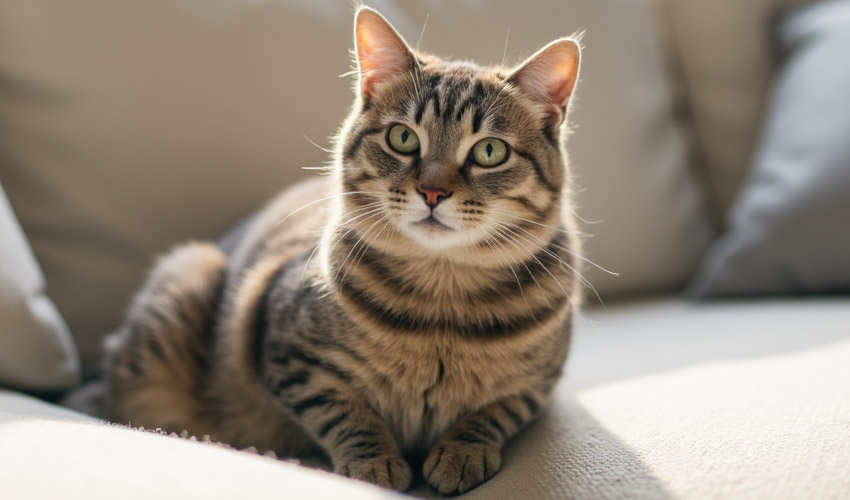Why can cats can be found in so many different colors? We look into the genetic factors and other reasons why they have such a variation in color.

The primary or base colors of cats are actually orange/red and black/dark brown. Cats are usually either orange or black. It’s actually rare to find a cat that has both an orange and black coloration. However, it’s only possible for female cats to have both an orange or black coloration. This is because the gene that controls color is directly connected to the X chromosome. Because female cats have two X chromosomes, it’s possible that one X chromosome could have the gene responsible for producing orange fur, and the other is responsible for black fur.
However, with that being said, in extremely rare instances, male cats can display both colors. This is a very rare abnormality. There really is always an exception.
It’s also more common for male cats to have orange fur. Roughly about 80 percent of orange cats will be male. This is because the black gene is more common, and in order for a female cat to have orange fur, it’s required to have both copies of its X chromosomes to have the orange gene. Male cats only need to have that orange gene once due to having only one X chromosome.
How Other Colors Emerge
Cats come in a kaleidoscope of colors thanks to a mix of genetics and evolution. Their fur color is determined by genes that control pigments like eumelanin (black or brown shades) and pheomelanin (orange or red hues). The patterns, like stripes, spots, or solid coats, are influenced by other genetic factors. For instance, the gene responsible for tabby stripes is dominant in domestic cats, hence why it’s so common.
Over time, natural selection also played a role. Different environments favored different colors and patterns for camouflage, helping cats to survive as predators or avoid becoming prey. Humans added their touch too. Selective breeding for desired traits has led to the variety of colors and patterns we see in cats today.
Black & White Cats

Some cats are black and white because of genetics, specifically how pigment cells play out during development. Coat color in cats comes down to melanin – eumelanin for black/dark brown and pheomelanin for reddish and orange shades. Black-and-white cats, often called “tuxedo” cats, get their appearance from a combo of genes that control where and how much pigment gets distributed.
The key player is the KIT gene, which affects melanocytes. These are cells that produce pigment. Mutations or variations in KIT can lead to patchy pigmentation/coloration, like the white fur you see on a black-and-white cat. White patches happen when melanocytes don’t migrate fully across the embryo, leaving some areas uncolored. The black parts are where eumelanin kicks in strong, while the white is basically a blank slate, meaning no pigment at all.
It’s not just random, though. The “piebald” or “white spotting” gene (linked to KIT) decides how much white shows up, from a tiny locket to big splotches. Breeding matters too. Domestic cats have been selected for their patterns and colorations over the centuries, so you see more of these combos in domestic cat than in wild felines. Tuxedo cats aren’t a breed; they’re a color pattern that pops up across breeds like the American Shorthair or even random moggies.
Why black and white specifically, not, say, orange and white? That’s down to which melanin genes dominate. Black’s a common base color, and the white spotting just interrupts it. Ever notice how tuxedo cats often have that sharp, dapper split? It’s nature’s art, genetics painting with a limited palette.
Grey, Cream Colored Cats

The grey color, often called “blue” in the cat world, is a diluted form of black. This occurs when a cat has inherited a gene that dilutes or lightens the intensity of the black pigmentation in their fur.
The dilution gene affects not only grey cats but also other colors, like turning orange into cream and brown into fawn. These genetic variations result in the beautiful range of coat colors we see in our feline friends.
It’s basically a dilution of the pigment due to genetic variation.








